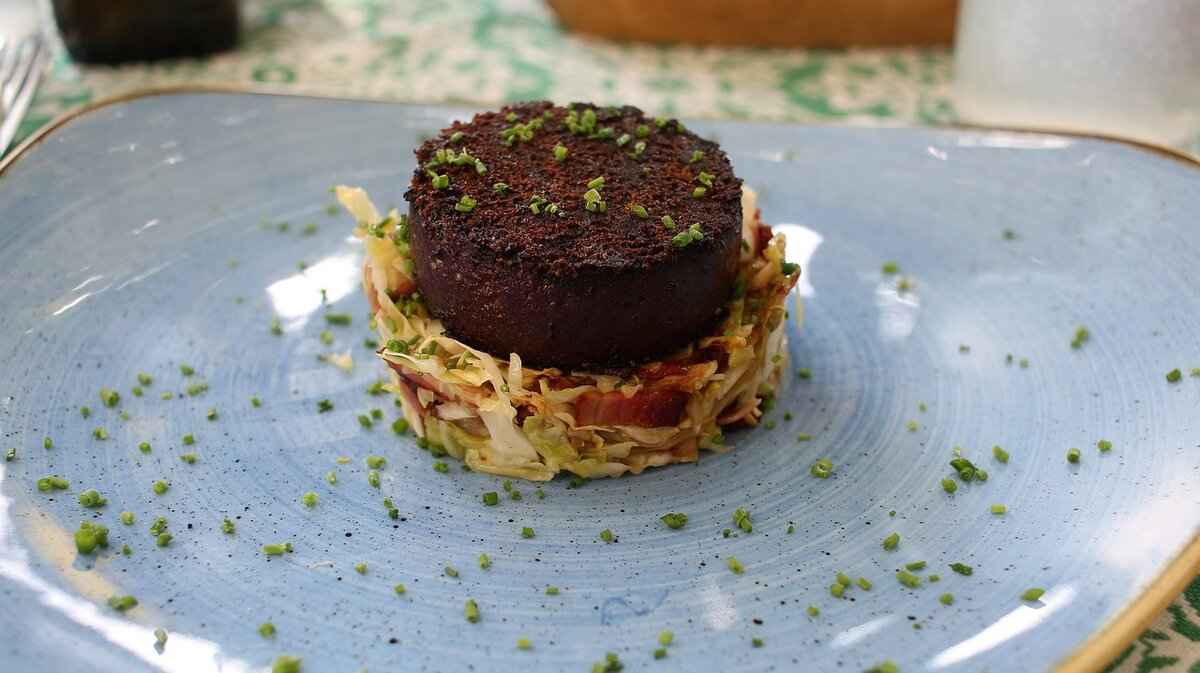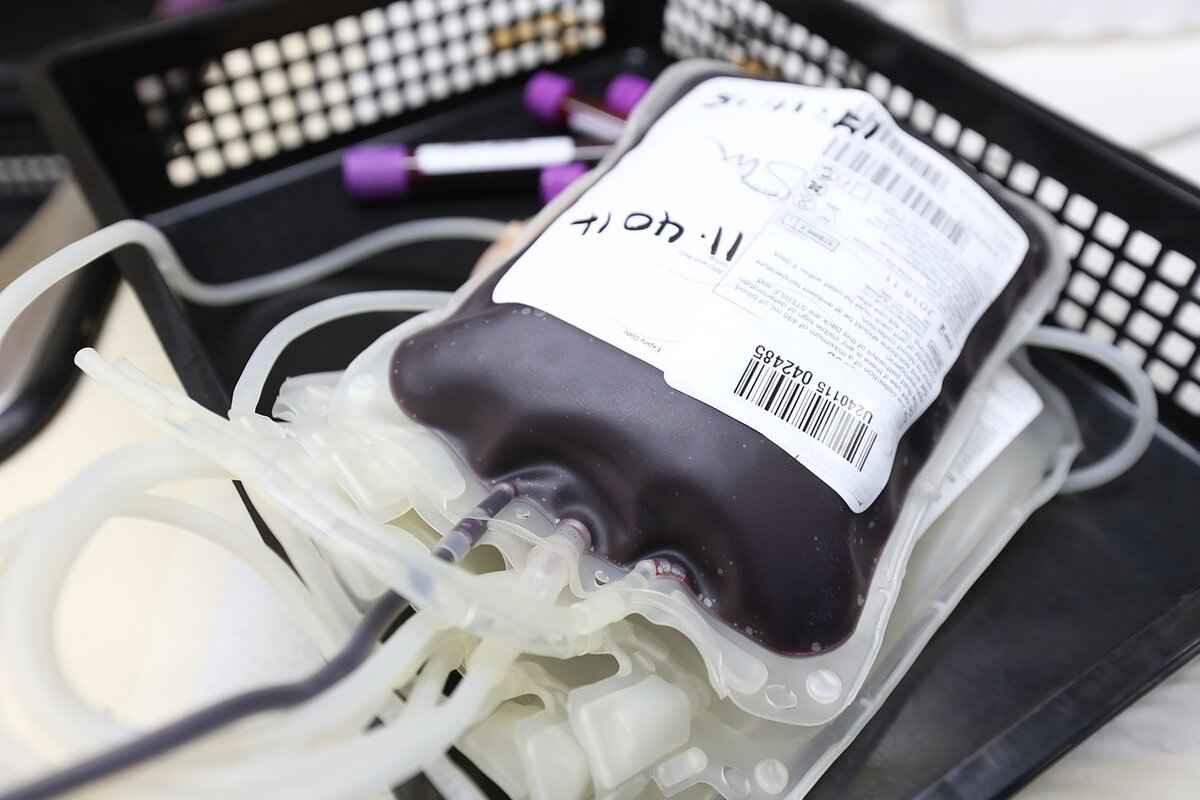This article explores effective methods for removing blood stains from concrete surfaces, offering practical tips and expert insights to ensure thorough cleaning without damaging the material. Blood stains can be a common issue, especially in settings where accidents may occur. Understanding the best practices for cleaning these stains is essential for maintaining the integrity and appearance of your concrete surfaces.
Understanding Blood Stains on Concrete
Blood stains can be particularly stubborn on porous surfaces like concrete. The composition of blood, which includes proteins and iron, can lead to deeper penetration into the concrete, making it challenging to remove. When blood comes into contact with concrete, it can bond with the surface, creating a stain that may require specific cleaning techniques to effectively eliminate. Knowing how blood interacts with concrete is crucial for selecting the right cleaning method.
Why Immediate Action is Crucial
Acting quickly can significantly improve the chances of successfully removing blood stains from concrete. Delaying cleaning can lead to deeper penetration and more challenging removal. When blood is left to dry, it hardens and binds more firmly to the surface, making it much more difficult to clean. Therefore, it is essential to address any blood stains as soon as they are noticed to ensure the best possible outcome.
Essential Supplies for Blood Stain Removal
Having the right tools and cleaning agents is vital for effective blood stain removal. Here are some essential supplies you’ll need before starting the cleaning process:
- Protective Gear: Gloves, masks, and goggles are important to ensure safety while handling blood and cleaning agents.
- Cleaning Solutions: Options include hydrogen peroxide, baking soda, and commercial stain removers designed for concrete.
- Scrubbing Tools: A stiff-bristled brush or scrubbing pad will help lift the stain without damaging the concrete.
- Absorbent Cloths: Clean cloths or paper towels are necessary for blotting up excess blood.
Step-by-Step Guide to Removing Blood Stains
A systematic approach to cleaning blood stains ensures thoroughness. Here’s a detailed step-by-step guide:
- Initial Blotting: Start by blotting the stain with a clean cloth to absorb excess blood. This prevents the stain from spreading.
- Applying Cleaning Solution: After blotting, apply your chosen cleaning solution to the stained area. Allow it to sit for a few minutes to break down the proteins in the blood.
- Scrubbing the Stain: Use a stiff-bristled brush to scrub the stain gently. This helps lift the blood from the concrete surface without causing damage.
- Rinsing and Drying: Once the stain is lifted, rinse the area thoroughly with clean water. Allow the concrete to dry completely to prevent any residue from remaining.
Natural Remedies for Blood Stain Removal
For those preferring eco-friendly options, several natural remedies can effectively remove blood stains from concrete:
- Baking Soda Paste: Create a paste with baking soda and water, apply it to the stain, and let it sit before scrubbing.
- Vinegar and Water Solution: A mixture of vinegar and water can help break down the proteins in blood, making it easier to clean.
Preventing Future Blood Stains
Taking preventive measures can help avoid future blood stains on concrete. Consider the following tips:
- Sealing Concrete Surfaces: Sealing your concrete can create a protective barrier against stains, making future cleaning easier.
- Regular Maintenance: Regular cleaning and maintenance can help keep concrete surfaces looking their best. Prompt attention to spills and stains is essential.
When to Seek Professional Help
In some cases, professional cleaning services may be necessary for stubborn stains. If the blood stain is extensive or has set in for a long time, professional cleaners have specialized tools and solutions that can restore your concrete effectively. Additionally, if the concrete shows signs of damage or deterioration, it’s best to consult professionals who can assess the situation and recommend appropriate actions.
By following these methods and tips, you can effectively clean blood stains from concrete surfaces, ensuring a clean and safe environment.

Understanding Blood Stains on Concrete
Blood stains on concrete can be particularly challenging to remove due to the porous nature of the material. Unlike non-porous surfaces, concrete has tiny holes and crevices that can trap liquids, making it easier for blood to seep in and become embedded. Understanding the composition of blood and how it interacts with concrete is essential for effective stain removal.
Blood is primarily made up of water, but it also contains proteins, enzymes, and cells, which can be difficult to break down once they dry. When blood comes into contact with concrete, the porous surface absorbs the liquid, leading to a deeper penetration that complicates the cleaning process. This is why immediate action is crucial. The longer the blood remains on the surface, the more difficult it becomes to remove.
To effectively clean blood stains from concrete, it is important to consider the following:
- Type of Concrete: Different concrete finishes can absorb stains differently. Smooth surfaces may be easier to clean than rough, textured ones.
- Age of the Stain: Fresh stains are significantly easier to remove compared to those that have dried and set into the concrete.
- Environmental Factors: Weather conditions, such as humidity and temperature, can affect how quickly blood dries and how deeply it penetrates the surface.
In addition to these factors, the method of cleaning also plays a crucial role. Using the wrong cleaning solution can potentially damage the concrete or make the stain worse. Therefore, it’s essential to choose the right cleaning agents that are effective yet safe for use on concrete surfaces.
Moreover, understanding the chemical reactions that occur during the cleaning process can help in selecting the right approach. For instance, hydrogen peroxide is known for its ability to break down organic matter, making it a popular choice for blood stain removal. However, it’s important to test any cleaning solution on a small, inconspicuous area first to avoid discoloration or damage to the concrete.
In summary, understanding the nature of blood stains and their interaction with concrete surfaces is fundamental for effective cleaning. By considering factors such as the type of concrete, age of the stain, and appropriate cleaning methods, one can significantly improve the chances of successful stain removal. Taking immediate action and using the right supplies will also contribute to achieving the best results.

Why Immediate Action is Crucial
When faced with a blood stain on concrete, acting swiftly is essential for successful removal. Blood, being a protein-based substance, can quickly penetrate porous surfaces like concrete, making the cleaning process increasingly difficult over time. The longer the stain remains, the more challenging it becomes to eliminate it completely. This section will delve into the importance of prompt action and the consequences of delaying the cleaning process.
Blood stains are notorious for their stubbornness, especially on surfaces that absorb liquids. The proteins in blood begin to bond with the concrete as they dry, creating a more permanent stain that can be resistant to standard cleaning methods. Immediate cleaning can prevent this bonding process, allowing for easier removal. If you delay, the stain may become embedded, leading to a situation where even the most effective cleaning solutions struggle to lift the stain.
Moreover, the presence of blood can pose health risks. Blood can carry pathogens, including bacteria and viruses, which can be harmful if left untreated. By cleaning the stain promptly, you not only address the aesthetic issue but also mitigate potential health hazards. Safety should always be a priority when dealing with biological materials.
In addition, acting quickly can save time and resources. The longer you wait, the more likely you will need to use harsher chemicals or professional cleaning services, which can be costly. By taking immediate action, you can often rely on simple household cleaning solutions that are both effective and economical.
To emphasize the importance of immediate action, consider this: a blood stain left for just a few hours can become significantly harder to remove than one that is treated right away. Time is of the essence when it comes to stain removal. A proactive approach not only improves the chances of successful cleaning but also ensures that your concrete surfaces remain safe and hygienic.
In conclusion, the urgency of addressing blood stains on concrete cannot be overstated. Quick action leads to better outcomes, minimizes health risks, and can save both time and money. Always keep cleaning supplies handy, and don’t hesitate to tackle stains as soon as they occur.

Essential Supplies for Blood Stain Removal
When it comes to effectively removing blood stains from concrete, having the right tools and cleaning agents is vital. Before you embark on the cleaning process, it’s essential to gather the necessary supplies to ensure a thorough and efficient removal. This section outlines the essential supplies you’ll need.
Safety should always be your first priority when dealing with blood stains. Here are some protective gear items you should consider:
- Gloves: Disposable gloves help protect your skin from potential pathogens and keep your hands clean.
- Face Mask: A mask can prevent inhalation of any harmful particles or fumes from cleaning agents.
- Goggles: Protect your eyes from splashes, especially when using strong cleaning solutions.
Choosing the right cleaning solutions is crucial for effective blood stain removal. Here are some common options:
- Hydrogen Peroxide: This is a powerful oxidizing agent that can break down blood stains effectively. It is particularly useful for fresh stains.
- Baking Soda: A natural abrasive that can help lift stains when made into a paste with water. It’s also safe for the environment.
- Commercial Stain Removers: There are many products specifically designed for removing blood stains from concrete. Look for those that are safe for porous surfaces.
After applying your cleaning solution, you’ll need the right tools for scrubbing:
- Stiff-Bristled Brush: Ideal for agitating the stain without damaging the concrete surface.
- Sponges: Use non-abrasive sponges for gentle scrubbing, especially on delicate areas.
To effectively manage the initial stages of cleaning, having absorbent materials on hand is essential:
- Clean Cloths: Use white or light-colored cloths to avoid color transfer. These are great for blotting up excess blood.
- Paper Towels: Handy for quick clean-ups, especially for fresh stains.
After the stain is removed, rinsing the area thoroughly is important:
- Bucket: For mixing cleaning solutions and rinsing.
- Garden Hose or Spray Bottle: To rinse the area with clean water.
Once you’ve cleaned and rinsed the area, drying it properly is crucial to prevent further staining:
- Old Towels: Use these to soak up excess water after rinsing.
- Fans: Setting up fans can help speed up the drying process, especially in humid conditions.
By gathering these essential supplies, you’ll be well-prepared to tackle blood stains on concrete effectively. Remember, the right tools and cleaning agents not only enhance the cleaning process but also ensure that you maintain a safe and clean environment.
Protective Gear
When engaging in the cleaning of blood stains, especially in sensitive environments, the use of is not just recommended; it is essential. Blood can carry various pathogens, and exposure can pose significant health risks. Therefore, wearing appropriate protective equipment ensures your safety and minimizes the risk of contamination.
- Gloves: It is crucial to wear disposable gloves, preferably nitrile or latex, to protect your hands from direct contact with blood. These materials provide a barrier against potential infections.
- Face Masks: A face mask is vital to prevent inhalation of any airborne pathogens. A surgical mask or a more advanced respirator can be beneficial, especially in poorly ventilated areas.
- Goggles: Protecting your eyes is equally important. Blood can splatter during the cleaning process, so wearing goggles or face shields can prevent any contact with your eyes.
- Protective Clothing: Consider wearing long sleeves and aprons made of durable, washable material. This will shield your skin from any splashes that might occur while cleaning.
In addition to these items, it’s advisable to have a first aid kit on hand. Accidents can happen, and being prepared with antiseptics and bandages can provide peace of mind.
Furthermore, ensure that your protective gear is in good condition before starting the cleaning process. Check for any tears or wear in gloves and masks, as compromised equipment cannot effectively protect you.
When cleaning blood stains, it’s also advisable to work in a well-ventilated area. Open windows or use fans to circulate air, reducing the concentration of any harmful airborne particles.
For those unfamiliar with the risks associated with blood, it’s important to understand that even small amounts can harbor bacteria and viruses. Therefore, taking these precautions seriously is essential for your health and safety.
By prioritizing protective gear, you not only safeguard yourself but also ensure a more effective cleaning process. Proper equipment allows you to focus on the task at hand without the distraction of health concerns, leading to a cleaner and safer environment.
In summary, the use of is a fundamental step in the cleaning of blood stains. By equipping yourself with gloves, masks, goggles, and protective clothing, you can significantly reduce health risks and enhance the efficacy of your cleaning efforts. Always remember that safety should come first, and being prepared is key to managing potentially hazardous situations effectively.
Cleaning Solutions
When it comes to removing blood stains from concrete surfaces, selecting the right cleaning solution is essential for achieving optimal results. Various options are available, each with its unique properties that can effectively tackle the stubborn nature of blood stains. Below, we explore some of the most effective cleaning solutions, their applications, and tips for use to ensure thorough cleaning without damaging the concrete.
- Hydrogen Peroxide: This powerful oxidizing agent is widely regarded as one of the best solutions for blood stain removal. Its ability to break down the proteins in blood makes it particularly effective. To use hydrogen peroxide, pour a small amount directly onto the stain, allowing it to bubble and foam. Let it sit for about 10-15 minutes before blotting it up with a clean cloth. Rinse the area with water afterward to remove any residue.
- Baking Soda: Known for its versatility, baking soda can be combined with water to create a paste that effectively lifts blood stains. To prepare, mix baking soda with a small amount of water until it forms a thick paste. Apply the paste to the stained area and let it sit for approximately 30 minutes. Afterward, scrub gently with a stiff-bristled brush and rinse thoroughly with water.
- Commercial Stain Removers: There are numerous commercial products available specifically designed for concrete stain removal. These products often contain specialized enzymes that target organic stains like blood. When using a commercial cleaner, follow the manufacturer’s instructions carefully for the best results. Always perform a patch test on an inconspicuous area to ensure it does not damage the concrete.
- Vinegar: For those who prefer eco-friendly solutions, vinegar is a natural alternative for blood stain removal. Its acidic nature helps to break down the proteins in blood. Mix equal parts of white vinegar and water in a spray bottle and apply it to the stain. Allow it to sit for a few minutes before scrubbing with a brush and rinsing with water.
- Salt Paste: Salt can also be an effective cleaner when combined with water to form a paste. The abrasive nature of salt helps to lift the stain while also acting as a natural disinfectant. Mix salt with a small amount of water to create a paste, apply it to the stain, and let it sit for about 15 minutes before scrubbing and rinsing.
In addition to these solutions, it’s crucial to act quickly when dealing with blood stains. The sooner you can apply your chosen cleaning solution, the better your chances of completely removing the stain. Always remember to wear protective gear, such as gloves and masks, when handling cleaning agents, especially when using strong chemicals.
In conclusion, whether you opt for hydrogen peroxide, baking soda, or a commercial stain remover, having the right cleaning solution at your disposal is vital for tackling blood stains on concrete effectively. By understanding the properties of these cleaning agents and how to use them correctly, you can restore your concrete surfaces to their original condition.

Step-by-Step Guide to Removing Blood Stains
Removing blood stains from concrete can seem daunting, but with a systematic approach, it becomes manageable. Whether the stain is fresh or has dried, following a detailed step-by-step guide ensures thorough cleaning and prevents permanent damage to the concrete surface. Below is a comprehensive method that you can follow:
- Initial Assessment: Before starting the cleaning process, assess the stain’s age and size. Fresh stains are easier to remove than older, set-in stains. Gather all necessary materials, including cleaning solutions, brushes, and protective gear, to prepare for the task.
- Blotting the Stain: Use a clean, dry cloth or paper towel to gently blot the stain. Avoid rubbing, as this can spread the blood further into the porous concrete. Blot until no more blood transfers to the cloth, absorbing as much liquid as possible.
- Choosing the Right Cleaning Solution: Depending on your preference, choose a cleaning solution. Common options include:
- Hydrogen Peroxide: A powerful stain remover that breaks down blood proteins.
- Baking Soda Paste: Mix baking soda with water to form a paste that can lift stains.
- Commercial Stain Removers: Look for products specifically designed for concrete.
- Application of Cleaning Solution: Apply your chosen cleaning solution directly to the stained area. For hydrogen peroxide, pour a small amount over the stain. For baking soda paste, spread it evenly over the stain. Allow the solution to sit for approximately 5-10 minutes to penetrate and break down the blood.
- Gentle Scrubbing: Using a stiff-bristled brush, gently scrub the stained area. This action helps lift the blood from the concrete without causing damage. Be careful not to use excessive force, as this could scratch the surface.
- Rinsing the Area: Once you have scrubbed the stain, rinse the area thoroughly with clean water. This step is crucial to remove any remaining cleaning solution and blood residue. Use a hose or a bucket of water for effective rinsing.
- Drying the Surface: Allow the concrete to air dry completely. If possible, place a fan nearby to speed up the drying process. Ensure that no moisture remains, as this can lead to further staining or damage.
- Repeat if Necessary: If the stain persists after the first attempt, repeat the process. Sometimes, stubborn stains may require multiple applications of the cleaning solution and scrubbing.
By following these detailed steps, you can effectively remove blood stains from concrete surfaces. Remember, the key to success is to act quickly and use the right materials. With patience and persistence, your concrete can return to its original condition.
Initial Blotting
When faced with a blood stain on concrete, the initial response is crucial for effective stain removal. The first step involves blotting the stain with a clean cloth. This action serves multiple purposes, primarily aimed at absorbing excess blood and preventing the stain from spreading further into the porous surface of the concrete.
Why is Blotting Important? Blood is a protein-based substance that can quickly penetrate porous materials like concrete. If left untreated, the stain can become more entrenched, making it increasingly difficult to remove. By promptly blotting the stain, you significantly reduce the risk of the blood seeping deeper into the concrete, which can lead to more extensive staining and potential structural issues.
To effectively blot the stain, follow these steps:
- Gather Supplies: You will need a clean, dry cloth or paper towels. Avoid using colored materials that could transfer dye onto the concrete.
- Blot, Don’t Rub: Place the cloth over the stain and gently press down to absorb the blood. Avoid rubbing, as this can push the blood further into the concrete.
- Change Cloths as Needed: If the cloth becomes saturated, switch to a fresh one to maximize absorption. This ensures that you are not simply redistributing the blood.
- Work from the Outside In: Start blotting from the outer edges of the stain and work your way toward the center. This technique helps contain the stain and prevents it from spreading.
After the initial blotting, you should observe a noticeable reduction in the amount of visible blood. This step is essential as it lays the groundwork for the next phase of cleaning, where you will apply a suitable cleaning solution to further tackle the stain.
In summary, the process is a vital first step in cleaning blood off concrete. It not only helps to absorb excess blood but also minimizes the risk of further staining. By taking this action promptly and effectively, you set the stage for a more successful cleaning process.
Applying Cleaning Solution
Cleaning blood stains from concrete surfaces can be a challenging task due to the porous nature of the material. However, knowing how to effectively apply a cleaning solution can make a significant difference in the outcome. This section delves into the specifics of applying cleaning solutions to ensure optimal results.
Once you have successfully blotted the excess blood from the surface, the next step is to apply your chosen cleaning solution to the stained area. It is essential to choose a solution that is effective yet safe for concrete. Here are some popular options:
- Hydrogen Peroxide: A common household item, hydrogen peroxide is effective in breaking down blood stains due to its oxidizing properties.
- Baking Soda Paste: Mixing baking soda with water creates a paste that can lift stains without damaging the concrete.
- Commercial Stain Removers: There are various products specifically designed for concrete that can effectively remove blood stains.
When applying the cleaning solution, it is crucial to follow these steps:
- Even Application: Use a spray bottle or a clean cloth to evenly distribute the cleaning solution over the stained area. Make sure to cover the entire stain for effective penetration.
- Allow to Sit: After application, allow the cleaning solution to sit for a few minutes. This waiting period is vital as it helps to break down the proteins present in the blood, making it easier to remove.
- Monitor the Reaction: Keep an eye on the area as the solution works. You may notice bubbling or fizzing, especially with hydrogen peroxide, which indicates that the solution is actively breaking down the stain.
After allowing the solution to sit, it is important to scrub the area gently. Use a stiff-bristled brush to lift the stain without damaging the concrete. Be patient; sometimes, multiple applications may be necessary for stubborn stains. After scrubbing, rinse the area thoroughly with clean water to remove any residue from the cleaning solution. This step is crucial to avoid any lingering chemicals that could harm the concrete over time.
In summary, applying a cleaning solution effectively requires careful selection, even application, and adequate time for the solution to work. By following these guidelines, you can significantly improve the chances of removing blood stains from concrete surfaces.
Scrubbing the Stain
When it comes to removing blood stains from concrete, is a crucial step that requires careful attention. The right technique can make a significant difference in lifting the stain without damaging the concrete surface. Here’s a comprehensive guide on how to effectively scrub blood stains from your concrete.
First and foremost, it’s essential to select the appropriate brush for the task. A stiff-bristled brush is highly recommended as it provides the necessary strength to dislodge the blood particles embedded in the porous concrete. However, it’s important to use the brush gently to avoid causing any scratches or abrasions on the surface. A gentle scrubbing motion will help lift the stain while preserving the integrity of the concrete.
Before you begin scrubbing, ensure that you have already completed the initial steps of the cleaning process. This includes blotting the area with a clean cloth to absorb excess blood and applying a suitable cleaning solution. Allowing the cleaning agent to sit for a few minutes will help break down the proteins in the blood, making it easier to scrub away.
Once you’re ready to scrub, start at the outer edges of the stain and work your way inward. This technique helps prevent the stain from spreading further across the concrete. Use a circular scrubbing motion and apply moderate pressure. If you notice that the stain is not lifting, consider adding a bit more cleaning solution or water to the area to keep it moist.
| Scrubbing Tips | Description |
|---|---|
| Use a Stiff-Bristled Brush | Provides strength to dislodge particles without damaging the surface. |
| Blot Before Scrubbing | Absorbs excess blood to prevent further staining. |
| Work from Edge to Center | Prevents the stain from spreading further. |
| Keep the Area Moist | Helps in lifting the stain more effectively. |
After scrubbing, rinse the area thoroughly with clean water to remove any remaining cleaning solution and blood residue. It’s important to allow the concrete to dry completely afterward, as moisture can lead to further staining or mildew growth.
In summary, scrubbing the stain is a vital part of the blood stain removal process on concrete. By using the right tools and techniques, you can effectively lift the stain while maintaining the appearance of your concrete surface. Remember to be patient and persistent, as some stains may require multiple attempts to completely remove.
Rinsing and Drying
Once you have successfully lifted the blood stain from the concrete surface, the next crucial step is to rinse the area thoroughly with clean water. This process is essential to ensure that any remaining cleaning solution, as well as any residual blood particles, are completely washed away. Here’s how to effectively rinse and dry the area:
- Use Plenty of Water: When rinsing, it’s important to use an ample amount of water. This helps to dilute any remaining cleaning agents and blood residue. A garden hose can be particularly effective for this purpose, as it allows for a strong spray that can reach all corners of the stained area.
- Check for Residue: After rinsing, visually inspect the area for any signs of lingering stains or cleaning solution. If you notice any discoloration, repeat the rinsing process until the area appears clean.
- Consider Pressure Washing: For larger or more stubborn stains, using a pressure washer can be an effective solution. The high-pressure water stream can help remove any remaining particles embedded in the porous surface of the concrete.
Once you have rinsed the area thoroughly, it is vital to allow the concrete to dry completely. This step is crucial for several reasons:
- Preventing Residue: If the concrete does not dry completely, there is a risk that cleaning agents or blood residue may remain, potentially leading to discoloration or a sticky surface.
- Avoiding Future Stains: Moisture can attract dirt and other contaminants, making the area more susceptible to future stains. Ensuring complete dryness helps maintain the cleanliness of your concrete surface.
- Promoting Longevity: Proper drying can help preserve the integrity of the concrete. Excess moisture can lead to deterioration over time, especially in freeze-thaw cycles.
To facilitate drying, consider the following tips:
- Increase Air Circulation: If possible, enhance airflow around the area by opening windows or using fans. This will help speed up the drying process.
- Avoid Direct Sunlight: While sunlight can help dry the area, excessive heat can cause the concrete to crack. Aim for a balance by choosing a shaded area if the sun is particularly intense.
- Time of Day: If you are cleaning outdoors, consider the time of day. Early morning or late afternoon can provide optimal conditions for drying without the intense heat of midday.
In conclusion, rinsing and drying your concrete surface after cleaning blood stains is a critical part of the stain removal process. By following these steps, you can ensure that your concrete remains in excellent condition, free from stains and residues that could compromise its appearance and durability.

Natural Remedies for Blood Stain Removal
When it comes to tackling blood stains on concrete, many individuals are increasingly seeking eco-friendly solutions. Natural remedies not only help in effectively lifting stains but also minimize the use of harsh chemicals that can harm the environment. This section explores various DIY solutions that are both practical and effective.
- Baking Soda Paste: One of the most popular natural remedies is a baking soda paste. To create this, simply mix baking soda with a small amount of water until it forms a thick paste. Apply this paste generously over the blood stain and let it sit for at least 30 minutes. The baking soda works by absorbing the stain and neutralizing odors. After the waiting period, scrub the area gently with a stiff-bristled brush to lift the stain, and then rinse with clean water.
- Vinegar and Water Solution: Another effective remedy is a mixture of white vinegar and water. Combine equal parts of vinegar and water in a spray bottle and apply it directly to the stained area. The acidity of vinegar helps to break down the proteins in blood, making it easier to clean. Allow the solution to sit for about 10-15 minutes before scrubbing with a brush. Rinse thoroughly afterward to remove any vinegar residue.
- Hydrogen Peroxide: Hydrogen peroxide is a powerful stain remover that can be used as a natural remedy. It can be applied directly to the stain. Use a 3% solution and pour it over the blood stain, allowing it to bubble and foam for a few minutes. This reaction helps lift the stain from the concrete. Afterward, blot the area with a clean cloth and rinse with water.
- Salt and Water Paste: Another simple solution involves mixing salt with water to form a paste. Apply this paste to the blood stain and let it sit for about 30 minutes. Salt acts as a natural abrasive and helps to lift the stain. After the time has elapsed, scrub the area gently and rinse with water.
- Lemon Juice and Baking Soda: The combination of lemon juice and baking soda can create a powerful stain-fighting duo. The acidity of lemon juice combined with the abrasiveness of baking soda makes it effective against blood stains. Mix the two ingredients to form a paste, apply it to the stain, and let it sit for 20-30 minutes. Scrub the area afterward and rinse well.
Additional Tips for Effective Stain Removal
While using these natural remedies, it’s important to remember a few key tips to enhance effectiveness:
- Act Quickly: The sooner you address a blood stain, the easier it will be to remove. Fresh stains are typically easier to treat than those that have dried.
- Test First: Always test your chosen remedy on a small, inconspicuous area of the concrete to ensure it doesn’t cause discoloration or damage.
- Patience is Key: Some stains may require multiple treatments to fully remove. Don’t be discouraged if the first attempt doesn’t yield perfect results.
By utilizing these natural remedies, you can effectively remove blood stains from concrete while being environmentally conscious. These DIY solutions not only save you money but also provide a safe alternative to commercial cleaning products.
Baking Soda Paste
When it comes to tackling blood stains on concrete, utilizing a can be an effective and eco-friendly solution. This method is particularly beneficial due to the natural properties of baking soda, which acts as a gentle abrasive and a natural deodorizer. Here’s a detailed guide on how to create and apply this paste to effectively lift blood stains.
To make a baking soda paste, you will need:
- Baking soda – a natural cleaning agent
- Water – to activate the baking soda
- A clean bowl – for mixing
- A spoon – for stirring
Follow these simple steps to create your paste:
1. In a clean bowl, add 1/4 cup of baking soda.2. Slowly add water, a tablespoon at a time, until you achieve a thick paste.3. Stir the mixture until it is well combined and smooth.
Once your paste is ready, it’s time to apply it to the blood stain:
- Initial Cleaning: Before applying the paste, gently blot the stain with a clean cloth to absorb any excess blood. Avoid rubbing, as this can spread the stain further.
- Application: Using a spatula or your fingers, apply the baking soda paste directly onto the blood stain. Ensure the paste completely covers the stained area.
- Let it Sit: Allow the paste to sit on the stain for at least 30 minutes. This gives the baking soda time to absorb and lift the stain.
- Scrubbing: After the waiting period, use a stiff-bristled brush to scrub the area gently. The abrasiveness of the baking soda will help lift the stain without damaging the concrete.
- Rinsing: Rinse the area thoroughly with clean water to remove any residue. It’s essential to ensure that all baking soda is washed away to prevent any powdery buildup.
- Drying: Allow the concrete to air dry completely. This step is crucial to prevent any moisture from causing further staining.
Baking soda is not only effective but also safe for both the environment and your health. It is non-toxic and does not emit harmful fumes, making it a preferable choice for households with children and pets. Additionally, baking soda’s ability to neutralize odors means that it can help eliminate any lingering smells associated with blood stains.
While baking soda paste is an excellent option, other methods can complement this technique. For instance, using hydrogen peroxide as a pre-treatment can enhance the stain removal process. Always test any cleaning solution on a small, inconspicuous area of the concrete before full application to ensure it does not cause discoloration.
In conclusion, employing a baking soda paste is a practical and efficient method to remove blood stains from concrete. With its ease of preparation and application, this natural remedy can restore your surfaces while being mindful of your health and the environment.
Vinegar and Water Solution
When it comes to removing blood stains from concrete, finding effective cleaning solutions is essential. One of the most accessible and eco-friendly options available is a . This mixture not only serves as a powerful cleaning agent but also offers a safe alternative to harsher chemicals.
The key to the effectiveness of vinegar lies in its acidity. Vinegar typically contains acetic acid, which can help break down the proteins found in blood. When blood comes into contact with concrete, it can seep into the porous surface, making it challenging to remove. However, the acidity of vinegar works to denature these proteins, making them easier to lift away from the concrete.
To create an effective cleaning solution, mix equal parts of white vinegar and water in a spray bottle or a bucket. For example:
| Ingredient | Measurement |
|---|---|
| White Vinegar | 1 cup |
| Water | 1 cup |
This simple mixture can be adjusted based on the size of the stain; just maintain the 1:1 ratio for optimal effectiveness.
Once the solution is prepared, follow these steps for application:
- Blot the Stain: Start by gently blotting the stain with a clean cloth to absorb any excess blood. Avoid rubbing, as this can spread the stain further.
- Spray or Pour the Solution: Apply the vinegar and water mixture directly onto the stained area. Ensure that the stain is thoroughly saturated.
- Let It Sit: Allow the solution to sit for about 5-10 minutes. This waiting period lets the vinegar work on breaking down the proteins in the blood.
- Scrub Gently: Using a stiff-bristled brush, gently scrub the area. This action will help lift the stain from the concrete surface.
- Rinse: After scrubbing, rinse the area with clean water to remove any vinegar residue.
- Dry the Area: Finally, use a clean towel to dry the area completely, preventing any moisture from lingering.
There are several advantages to using a vinegar and water solution for blood stain removal:
- Eco-Friendly: Vinegar is a natural product, making it safe for the environment and free from harsh chemicals.
- Cost-Effective: Most households already have vinegar, making this method inexpensive.
- Non-Toxic: Unlike many commercial cleaners, vinegar is safe for use around pets and children.
While vinegar is effective, it may not work on all types of stains, especially if the blood has set in for a long time. In such cases, you might need to combine this method with other cleaning agents or seek professional help for stubborn stains.
In conclusion, a vinegar and water solution is a practical and effective method for tackling blood stains on concrete. By understanding how to use this simple mixture, you can maintain clean surfaces while also being environmentally conscious.

Preventing Future Blood Stains
Blood stains on concrete can be a significant concern, especially in areas where accidents or injuries are likely to occur. However, by taking preventive measures, you can significantly reduce the risk of these unsightly stains. This section provides practical tips and strategies to help you maintain your concrete surfaces and keep them stain-free.
Sealing Concrete Surfaces
One of the most effective ways to prevent blood stains is by applying a high-quality sealant to your concrete. Sealing creates a protective barrier that prevents liquids, including blood, from penetrating the porous surface of the concrete. This not only makes cleaning easier but also helps to maintain the integrity of the concrete over time. When selecting a sealant, look for products specifically designed for outdoor or high-traffic areas, as these will offer better durability and protection.
Regular Maintenance
Implementing a routine maintenance schedule is crucial for keeping concrete surfaces in good condition. Regular cleaning can help prevent stains from setting in. Consider the following maintenance tips:
- Promptly Address Spills: Immediately clean any spills, especially blood, to prevent staining. Use absorbent materials to blot the area before applying any cleaning solution.
- Routine Cleaning: Regularly sweep or wash concrete surfaces to remove dirt and debris that can trap moisture and lead to staining.
- Inspect for Damage: Regularly check your concrete for cracks or chips, which can harbor stains. Addressing these issues promptly can prevent further deterioration.
Utilizing Protective Mats or Covers
In areas where blood spills are more likely, consider using protective mats or covers. These can be placed in high-risk zones, such as near workstations or outdoor areas where activities might lead to spills. Mats can absorb liquids and are often easier to clean or replace than concrete surfaces.
Educating Your Team
If you manage a facility or workspace, educating your team about the importance of preventing stains can be invaluable. Conduct training sessions that cover:
- Proper Cleaning Techniques: Teach staff how to clean up spills immediately and effectively.
- Use of Protective Gear: Encourage the use of gloves and other protective gear when handling materials that may cause stains.
- Awareness of Surroundings: Foster a culture of awareness where employees are vigilant about potential hazards that could lead to spills.
Implementing a Stain-Resistant Coating
In addition to sealing, applying a stain-resistant coating can provide an extra layer of protection. These coatings are designed to repel stains and make cleaning easier. They can be particularly beneficial in environments prone to spills, such as kitchens or workshops. Ensure that the coating is compatible with your existing sealant for optimal results.
Conclusion
By incorporating these preventive measures, you can significantly reduce the likelihood of blood stains on your concrete surfaces. Regular maintenance, proper sealing, and education are key components in maintaining a clean and safe environment. With these strategies in place, you can enjoy the benefits of durable and stain-free concrete.
Sealing Concrete Surfaces
Sealing concrete surfaces is a crucial step in maintaining the integrity and appearance of your concrete. By applying a quality sealant, you create a protective barrier that can significantly reduce the risk of stains, moisture infiltration, and damage from environmental factors. This process is especially important for outdoor concrete, which is constantly exposed to the elements.
Concrete is a porous material, which means it can absorb liquids and stains if left untreated. Blood stains, oil spills, and other contaminants can penetrate deeply into the surface, making them challenging to remove. Therefore, sealing your concrete not only prevents these substances from settling in but also simplifies future cleaning efforts.
Benefits of Sealing Concrete
- Stain Resistance: A sealed surface is much less likely to absorb stains. This is particularly beneficial in areas prone to spills, such as garages or patios.
- Moisture Protection: Sealing prevents water from seeping into the concrete, which can lead to cracking and other structural issues over time.
- Enhanced Durability: A sealant can prolong the life of your concrete surfaces by protecting them from wear and tear caused by foot traffic and heavy equipment.
- Aesthetic Appeal: Sealers can enhance the color and finish of concrete, making it look more polished and visually appealing.
Types of Concrete Sealers
There are several types of sealers available, each designed for specific applications:
- Acrylic Sealers: These are easy to apply and provide a glossy finish, making them ideal for decorative concrete.
- Epoxy Sealers: Known for their durability, epoxy sealers are perfect for high-traffic areas and industrial applications.
- Polyurethane Sealers: These offer excellent abrasion resistance and are often used in commercial settings.
- Penetrating Sealers: These sealers penetrate deep into the concrete and provide long-lasting protection without altering the surface appearance.
How to Seal Concrete Surfaces
Sealing concrete is a straightforward process, but it requires proper preparation and application:
- Clean the Surface: Remove any dirt, oil, or stains using a pressure washer or a suitable concrete cleaner.
- Allow to Dry: Ensure the concrete is completely dry before applying the sealer.
- Choose the Right Sealer: Select a sealer that meets your needs based on the type of concrete and its intended use.
- Apply the Sealer: Use a roller or sprayer to apply an even coat of sealer, following the manufacturer’s instructions.
- Allow to Cure: Let the sealer cure as directed, which may take several hours to a few days, depending on the product.
Regular Maintenance After Sealing
Once your concrete is sealed, maintaining it is essential to ensure long-lasting protection. Regular cleaning and periodic reapplication of the sealer will keep your surfaces looking their best. Check for signs of wear or damage and address them promptly to prevent further issues.
In summary, sealing your concrete surfaces is an essential preventive measure that not only protects against stains and moisture but also enhances the overall durability and appearance of your concrete. By investing time in sealing and maintaining your concrete, you can ensure it remains in excellent condition for years to come.
Regular Maintenance
is essential for preserving the appearance and longevity of concrete surfaces. Concrete, while durable, can be susceptible to stains and wear if not properly cared for. This section delves into the importance of consistent maintenance routines and the best practices for keeping your concrete looking its best.
Concrete surfaces, whether indoors or outdoors, are constantly exposed to various elements that can lead to deterioration. Regular maintenance not only enhances the aesthetic appeal of your concrete but also extends its lifespan. For instance, prompt attention to spills and stains can prevent them from setting in, making future cleaning much easier. Additionally, regular cleaning helps to remove dirt and grime that can accumulate over time, reducing the risk of surface damage.
Establishing a maintenance routine is key to effective care for your concrete surfaces. Here are some steps to consider:
- Weekly Cleaning: Sweep or vacuum the surface weekly to remove debris and prevent scratches.
- Monthly Deep Cleaning: Use a pressure washer or a specialized concrete cleaner monthly to remove stubborn dirt and stains.
- Quarterly Inspections: Regularly inspect your concrete for cracks or signs of wear. Addressing these issues early can prevent more significant problems later.
Implementing best practices can significantly enhance the effectiveness of your maintenance routine:
- Seal Your Concrete: Applying a sealer can provide a protective barrier against stains and moisture, making cleaning easier.
- Promptly Address Spills: Whether it’s oil, food, or other substances, clean spills immediately to prevent staining.
- Use Appropriate Cleaning Solutions: Choose cleaning products specifically designed for concrete to avoid damaging the surface.
Investing time in regular maintenance offers numerous benefits:
- Enhanced Appearance: Well-maintained concrete looks cleaner and more inviting.
- Increased Durability: Regular care helps to prevent cracks and other forms of damage, extending the life of your concrete.
- Cost-Effective: Preventative maintenance can save you money in the long run by avoiding costly repairs.
In summary, is vital for keeping concrete surfaces in optimal condition. By developing a routine and following best practices, you can ensure that your concrete remains attractive and durable for years to come. Remember, the key to effective maintenance is consistency and prompt action when issues arise.

When to Seek Professional Help
In the realm of cleaning blood stains from concrete, there are instances where the expertise of professional cleaning services becomes not just beneficial but essential. Understanding when to call in the experts can save time, prevent further damage, and ensure a thorough cleaning process. Below, we explore several scenarios that warrant professional intervention.
- Severe Stains: If the blood stain is extensive or has set in for a long time, it can become increasingly difficult to remove. Professionals possess specialized tools and cleaning solutions designed to tackle deep-set stains effectively. Their experience enables them to assess the stain’s severity and apply the most effective methods for removal.
- Multiple Layers of Staining: In cases where blood has penetrated multiple layers of the concrete, DIY methods may not suffice. Professional cleaners have access to advanced equipment, such as pressure washers and industrial-grade cleaners, that can reach deeper levels of staining without damaging the concrete.
- Structural Concerns: If the concrete shows signs of damage or deterioration, it’s advisable to consult professionals. They can assess the structural integrity of the concrete and recommend appropriate actions. Ignoring underlying issues could lead to more significant problems down the line.
- Health and Safety Risks: Cleaning blood stains can pose health risks, especially if the blood is from an unknown source. Professionals are trained to handle such situations safely, using protective gear and following protocols to minimize health hazards. They understand the importance of biohazard cleanup and can ensure that the area is sanitized properly.
- Time Constraints: If you are short on time or simply prefer not to handle the cleaning yourself, hiring professionals can be a practical solution. They can often complete the job more quickly and efficiently than an untrained individual, allowing you to focus on other priorities.
In summary, while many blood stains can be tackled with DIY methods, there are specific situations where professional cleaning services are necessary. Whether dealing with severe stains, structural concerns, or health risks, calling in the experts can provide peace of mind and ensure a thorough and safe cleaning process. By recognizing these scenarios, you can make informed decisions about when to seek help, ensuring your concrete surfaces remain clean and well-maintained.
Severe Stains
When it comes to cleaning blood stains from concrete, the severity of the stain plays a crucial role in determining the best course of action. If the blood stain is extensive or has set in for a long time, it can become particularly challenging to remove. In such cases, professional cleaners possess the necessary tools and specialized solutions that can effectively restore your concrete surfaces.
Blood is composed of proteins and other organic materials that can penetrate deeply into porous surfaces like concrete. Over time, these materials can bond with the concrete, making it increasingly difficult to eliminate the stain through conventional cleaning methods. If left untreated, the stain may not only remain visible but could also lead to unpleasant odors and further degradation of the concrete surface.
For homeowners or property managers facing such stubborn stains, seeking professional help can be a wise decision. Professional cleaning services often utilize advanced techniques, such as pressure washing and chemical treatments, that are specifically designed to tackle tough stains. These methods can penetrate the surface of the concrete more effectively than household cleaning products, ensuring a thorough clean without damaging the material.
Additionally, professionals can assess the extent of the stain and determine if there are underlying issues that need to be addressed. For example, if the concrete has begun to deteriorate due to moisture or other environmental factors, they can recommend appropriate repairs or preventative measures to avoid future staining.
It is also worth noting that attempting to clean severe stains without the proper knowledge or equipment can sometimes exacerbate the problem. Harsh scrubbing or the use of inappropriate cleaning agents can cause further damage to the concrete surface, leading to costly repairs. Therefore, it is essential to weigh the potential risks and benefits of DIY cleaning versus hiring experts.
In summary, when dealing with severe blood stains on concrete, professional cleaning services offer invaluable expertise and resources. Their specialized tools and techniques can restore the affected areas effectively, ensuring that your concrete surfaces remain clean and well-maintained. If you’re unsure about the best approach to take, consulting with a professional can provide peace of mind and a cleaner outcome.
Structural Concerns
When dealing with blood stains on concrete, it is essential to recognize that the integrity of the concrete itself may be at risk. If you notice any signs of damage or deterioration, it is crucial to consult professionals who can accurately assess the situation and recommend appropriate actions. Ignoring these signs can lead to more severe issues in the future, both in terms of aesthetics and structural stability.
Signs of Damage in Concrete
- Cracks: Small cracks can develop into larger fissures over time, especially if they are not addressed promptly.
- Spalling: This occurs when the surface of the concrete begins to flake or chip away, often due to moisture infiltration.
- Discoloration: Stains that penetrate deeply can cause discoloration, indicating that the concrete might be absorbing more than just surface-level contaminants.
- Uneven Surfaces: If the concrete feels uneven or has settled in certain areas, it may indicate underlying structural issues.
Why Professional Assessment is Important
Engaging a professional for an assessment is important for several reasons:
- Expertise: Professionals have the training and experience to identify issues that an untrained eye might miss.
- Proper Tools: They utilize specialized tools and techniques that can effectively diagnose and remedy the situation without causing further damage.
- Long-Term Solutions: Professionals can recommend preventative measures to avoid future deterioration, ensuring the longevity of your concrete surfaces.
Potential Risks of Ignoring Structural Issues
Neglecting to address structural concerns can lead to various problems:
- Increased Repair Costs: Small issues can escalate into significant repairs if not addressed promptly, resulting in higher costs.
- Safety Hazards: Compromised concrete can pose safety risks, especially in high-traffic areas.
- Reduced Property Value: Poorly maintained concrete can detract from the overall value and appeal of your property.
What to Expect from Professional Services
When you consult a professional, here’s what you can expect:
- Thorough Inspection: A comprehensive assessment of the concrete condition, identifying any signs of damage and deterioration.
- Customized Solutions: Recommendations tailored to your specific situation, whether it involves cleaning, sealing, or repairing the concrete.
- Follow-Up Maintenance: Guidance on how to maintain your concrete surfaces to prevent future issues.
In conclusion, if you suspect your concrete has been compromised, it is always best to err on the side of caution. Engaging with professionals not only ensures a thorough evaluation but also provides peace of mind that your concrete surfaces will remain safe and aesthetically pleasing for years to come.

Conclusion
Cleaning blood stains from concrete can be a daunting task, especially if the stains have had time to set in. However, with the right methods and tools, you can restore your concrete surfaces to their original state. This article will delve into effective techniques for removing blood stains, ensuring that your environment remains clean and safe.
When it comes to removing blood stains from concrete, timing is everything. The sooner you act, the better your chances of complete removal. Blood is composed of proteins that can bond with concrete, making stains challenging to eliminate. Here are some effective methods:
- Hydrogen Peroxide: This is one of the most effective solutions for blood stain removal. Apply it directly to the stain, let it bubble, and then scrub gently with a brush.
- Baking Soda Paste: Mix baking soda with water to create a paste, apply it to the stain, and allow it to sit before scrubbing.
- Commercial Stain Removers: There are many products specifically designed for concrete that can effectively lift blood stains without causing damage.
Blood stains are particularly troublesome on porous surfaces like concrete because they can seep deep into the material. The proteins in blood can bind to the concrete, making it crucial to understand how to treat these stains effectively. Knowledge of the composition of blood and its interaction with concrete is essential for successful removal. Always remember to test any cleaning solution on a small, inconspicuous area first to avoid discoloration.
Acting quickly is vital when dealing with blood stains. Delaying the cleaning process allows the blood to penetrate deeper into the concrete, making it more challenging to remove. If you notice a blood stain, take immediate action by blotting the area with a clean cloth to absorb as much blood as possible. This initial step can significantly improve the effectiveness of your cleaning efforts.
Before you start cleaning, gather the necessary supplies to ensure an effective cleaning process. Here’s a list of essential items:
- Protective Gear: Always wear gloves and goggles to protect yourself from any harmful substances.
- Cleaning Solutions: Have hydrogen peroxide, baking soda, vinegar, and a stiff-bristled brush on hand.
- Absorbent Cloths: Use clean, dry cloths for blotting and drying the area.
Follow this systematic approach for the best results:
- Initial Blotting: Use a clean cloth to blot the stain, absorbing as much blood as possible.
- Applying Cleaning Solution: After blotting, apply your chosen cleaning solution. Let it sit for a few minutes to break down the proteins.
- Scrubbing: Gently scrub the area with a stiff-bristled brush to lift the stain from the concrete.
- Rinsing: Rinse the area thoroughly with clean water to remove any residue.
- Drying: Allow the concrete to dry completely to prevent any remaining residue from setting.
If you prefer natural cleaning solutions, consider the following methods:
- Baking Soda Paste: Combine baking soda with water to create a paste, apply it to the stain, and scrub after letting it sit.
- Vinegar Solution: A mixture of vinegar and water can effectively break down blood proteins, making it easier to clean.
To minimize the risk of future blood stains on your concrete surfaces, consider these preventive measures:
- Sealing Concrete: Applying a sealant can create a protective barrier against stains.
- Regular Maintenance: Regular cleaning and prompt attention to spills can keep your concrete looking its best.
In some cases, stubborn stains may require professional intervention. If a blood stain is extensive or has set for a long time, consider hiring experts who have specialized tools and solutions. Additionally, if you notice signs of damage to the concrete, it’s advisable to consult professionals who can assess and recommend appropriate solutions.
By following these methods and tips, you can effectively clean blood stains from concrete surfaces, ensuring a clean and safe environment.
Frequently Asked Questions
- What is the best method to remove blood stains from concrete?
The most effective method involves a combination of blotting the stain, applying a cleaning solution like hydrogen peroxide, scrubbing with a stiff-bristled brush, and rinsing thoroughly. This systematic approach ensures you tackle the stain effectively without damaging the concrete.
- Can I use natural remedies to clean blood stains?
Absolutely! Natural remedies like a baking soda paste or a vinegar and water solution can be quite effective. These eco-friendly options break down the proteins in blood, making it easier to lift the stain without harsh chemicals.
- How quickly should I act to remove blood stains?
Timing is crucial! The sooner you can address a blood stain, the better your chances of complete removal. Delaying action can lead to deeper penetration into the concrete, making it much harder to clean later.
- Is it necessary to wear protective gear while cleaning?
Yes, wearing gloves, masks, and goggles is highly recommended. Blood can carry pathogens, and protective gear ensures your safety while you clean.
- When should I consider hiring a professional?
If the blood stain is extensive or has set in for a long time, or if you notice structural concerns with the concrete, it’s best to consult professionals. They have specialized tools and expertise to handle tough stains safely.














